Dewoitine D.520

D.520 n°329 - A/C Gabriel Mertzisen - 5° escadrille, GC III/6
Rayack (Liban), 8 juin 1941 - Rayack (Lebanon), 8th June, 1941.
© Dekker Art Work - Thierry Dekker http://dekkerartwork.over-blog.com
Le 18 juin, un nouveau combat entre Gladiator et D.520 cause la perte du n° 389 (son pilote, le Lt Boiries est tué) et du n° 52 (code "29") dont le pilote, le sergent Pimont est capturé après s'être posé dans les lignes anglaises. 4 (ou 5) nouveaux D.520 et pilotes arrivent en renfort le lendemain : le groupe est alors équipé de 12 D.520 opérationnels le 20 juin. Le 23 juin, le GC III/6 affrontent des Hurricane des Sqn. 80 et 260 et renoue avec la victoire : 5 victoires confirmées contre 1 D.520 (celui de Le Gloan) endommagé. Un peu plus tard ce même jour, 12 Tomahawk Mk IIB dy Sqn. 3 de la R.A.A.F. attaquent 9 D.520 sur la plaine de la Bekaa et abattent le Lt Steunou (D.520 n° 370) et le Sgt Savinel (n° 382) qui sont tués contre un P-40 revendiqué par le Capitaine Richard et un probable par l'adjudant Balmer.
On June 18th, a new dogfight between Gladiators and D.520s caused the loss of # 389 (his pilot, Lt Boiries was killed) and # 52 (code "29") which pilot, sergeant Pimont was captured after landing in the English area. 4 (or 5) new D.520s and their pilots arrived as an additional help the next day : the group was then equipped with 12 operational D.520 on June 20th. On June 23rd, the GC III/6 faced Hurricanes of Sqn. 80 and 260 with some success : 5 confirmed victories against 1 D.520 damaged (Le Gloan). A little later the same day, 12 Tomahawk Mk IIB of Sqn. 3 of the R.A.A.F. attacked 9 D.520 in the plain of Bekaa and shot down Lt Steunou (D.520 # 370) and Sgt Savinel (# 382) who were killed against one P-40 claimed by Captain Richard and one probable by warrant officer Balmer.
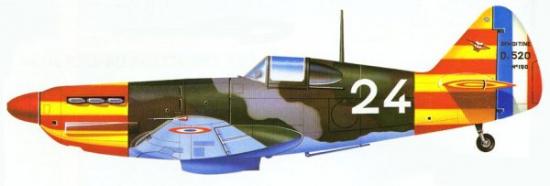
D.520 - 6e Escadrille, GC III/6 - Alger - Maison-Blanche - Fin 1941 - Algiers - Maison-Blanche - Late 1941
artiste inconnu - artist unknown - source : http://wp.scn.ru
Le 26 juin, les chasseurs anglais détruisent sur la piste de Rayack le D.520 n° 314 de la 5ème escadrille et le sergent Michaux crashe son n° 321 au retour d'une mission d'escorte sans doute à cause de la brume. Trop exposé à Rayack, le groupe opère à partir du 27 juin depuis Alep-Nerab (Syrie). Ce n'est que le 3 juillet qu'Anglais et Français s'affronteront de nouveau lors d'une mission d'escorte de LeO 451 : les D.520 abattront un Hurricane du Sqn. 127 et un mitrailleur dorsal d'un LeO 451 en abattra un second. Arrivée de 2 nouveaux D.520 et 4 pilotes le 4 juillet. Le 5, 2 nouveaux Hurricane du Sqn. 127 sont abattus.
On June 26th, English fighters destroyed on Rayack runway the D.520 # 314 of the 5th squadron and sergeant Michaux crashed his # 321 when returning from an escort mission probably because of the mist. Too exposed at Rayack, the group operated from June 27th from Alep-Nerab (Syria). It is only on July 3rd that English and French faced again during an escort mission of LeO 451 : D.520s shot down a Hurricane of Sqn. 127 and a dorsal machine gunner of a LeO 451 shot down a second one. Arrival of 2 new D.520s and 4 pilots on July 4th. On the 5th, 2 new Hurricane of Sqn. 127 were shot down.

D.520 n° 174 - GC III/6, 6e escadrille - Lt Georges Legrand - Alep-Nerab, 6 juillet/6th July 1941
© Pierre-André Tilley

D.520 n° 361 - GC III/6, 5e escadrille - Sergent Jean Mequet - Alger-Maison Blanche, 16 juillet/16th July 1941
© Pierre-André Tilley
La campagne de Syrie étant perdue, le groupe se replie en Grèce dans la nuit du 8 au 9 juillet. Les combats cesseront le 12 juillet. Mi juillet, le GC III/6 retourne à Alger-Maison Blanche et y retrouve les GC II/3 et GC I/3. Le 17 août, 5 D.520 neufs sont livrés de Toulouse (n° 45, 148, 153, 469 et 472). Le 9 octobre, le D.520 n° 423 (code "22") est détruit par accident au décollage ; le pilote, le sergent Pimont n'est miraculeusement que blessé à la mâchoire. Au 1er novembre 1941, le GC III/6 dispose de 24 D.520 dont 21 opérationnels. Jusqu'en mai 1942, peu de misisons mais de l'entraînement. Lors de la campagne de Syrie, le GC III/6 a perdu 5 tués et 4 prisonniers, 18 avions et a revendiqué 24 victoires.
The campaign of Syria being lost, the group fly back in Greece during the night of 8th to 9th. The fights stopped on July 12th. Mid-July, the GC III/6 returned to Alger-Maison Blanche and found there the GC II/3 and GC I/3. On August 17th, 5 new D.520 were delivered from Toulouse (# 45, 148, 153, 469 and 472). On October 9th, the D.520 # 423 (code "22") was accidentally destroyed during take off ; the pilot, sergeant Pimont was by chance only hurt at the jaw. On November 1st, 1941, the GC III/6 had 24 D.520 with only 21 operational. Until May, 1942, a few missions but training. During the Syria campaign, the GC III/6 had 5 pilots killed, 4 prisonners and 18 aircrafts destroyed ; it claimed 24 air kills.
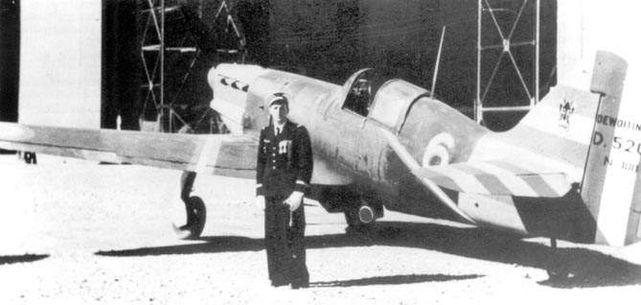

D.520 n° 300 - Lt Pierre Le Gloan - Algérie 1942 - Algeria 1942
Photo : auteur inconnu - Picture : author unknown
Dessin - Artwork © Pierre-André Tilley
Le 18 mai, des D.520 du Groupe endommagent le Catalina AJ158 "F" du Sqn. 202 qui amerrit. Les D.520 se succèdent alors pour le surveiller jusqu'à l'arrivée d'un torpilleur pour capturer l'équipage. Mais les Anglais envoient deux Fulmar du Sqn. 807 du HMS Argus : l'un d'eux abat le D.520 n° 361 du Lt Salaün. 3 D.520 arrivent 15 minutes plus tard et abattent un Fulmar. Le 20 mai, la 5ème escadrille du GC III/6 est transférée à Sfax (Tunisie) pour protéger les convois le long de la côte Tunisienne. Elle reviendra à Alger le 25 juin. Au 1er novembre, 19 D.520 sont disponibles sur les 24 du Groupe (n° 45, 148, 153, 162, 174, 190, 210, 219, 243, 261, 280, 295, 300, 301, 307, 313, 323, 362, 365, 369, 388, 392, 396 et 472).
On May 18th , D.520s of the Group damaged the Catalina AJ158 "F" of Sqn. 202 which landed on water. The D.520 then succeeded one another to watch it until the arrival of a torpedo boat to capture the crew. But the English sent two Fulmar of Sqn. 807 from HMS Argus : one of them shot down the D.520 # 361 of Lt Salaün. 3 D.520s arrived 15 minutes later and shot down one of the Fulmars. On May 20th, the 5th squadron of the GC III/6 was sent to Sfax (Tunisia) to protect convoies along the Tunisian coast. It returned to Algiers on June 25th. On November 1st, 19 D.520 were available out of the 24 of the Group (# 45, 148, 153, 162, 174, 190, 210, 219, 243, 261, 280, 295, 300, 301, 307, 313, 323, 362, 365, 369, 388, 392, 396 et 472).
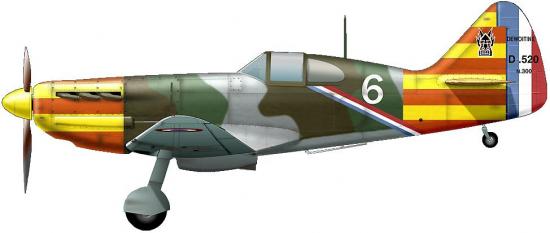 D.520 n°300 GC III/6 - 5ème escadrille - Pierre le Gloan
D.520 n°300 GC III/6 - 5ème escadrille - Pierre le Gloan
©nag - Source : nag's gallery - www.nags-gallery.com
Au déclenchement de l'opération Torch, le 8 novembre 1942, aucun avion du GC III/6 ne peut décoller à cause du brouillard et dès 7h, la base est occupée sans incident. Le 10 novembre, le groupe s'installe sur l'aérodrome de Oued-Smar (près d'Alger). Rallié aux Américains, le GC III/6 sera réorganisé et rééquipé avec du matériel américain. Le 16 janvier 1943, il rejoint Aïn Sefra dans le Sud Algérien. Le 7 février, le groupe aligne 18 D.520. Le 1er mars, le GC III/6 devient GC III/6 "Roussillon" et les 5ème et 6ème escadrilles deviennent 1ère et 2ème escadrilles. Le 1er mai 1943, le groupe reçoit ses premiers P-39 Airacobra et les D.520 seront progressivement envoyés aux GC I/2 et II/3 (les derniers le 26 mai).
During the operation Torch, on November 8th, 1942, no aircraft of the GC III/6 could take off because of the fog and at 7 am, the base was occupied without any problem. On the 10th November, the group moved to the airfiel of Oued-Smar (near Algiers). Allied to the Americans, the GC III/6 was then reorganized and re-equipped with American equipment. On January 16th, the group reached Aïn Sefra in Southern Algeria. On February 7th, the group had 18 D.520s. On March 1st, the GC III/6 became GC III/6 "Roussillon" and the 5th and 6th squadrons became 1st and 2nd squadrons. On May 1st, 1943, the group received its first P-39 Airacobra and the D.520s were progressively sent to GC I/2 and GC II/3 (last ones sent on 26th May).
Victoires du GC III/6 en Afrique du Nord sur D.520
Victories of GC III/6 in Northern Africa with D.520
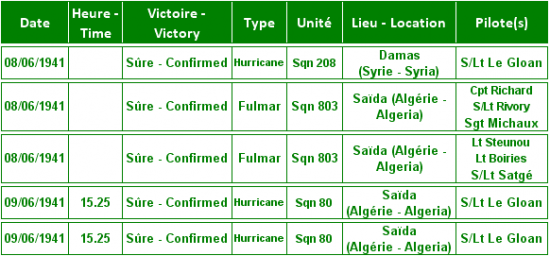
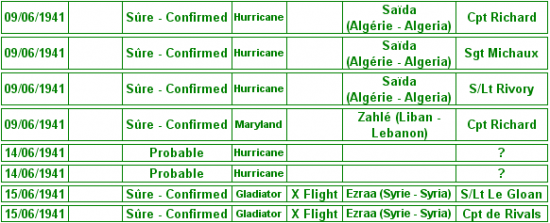

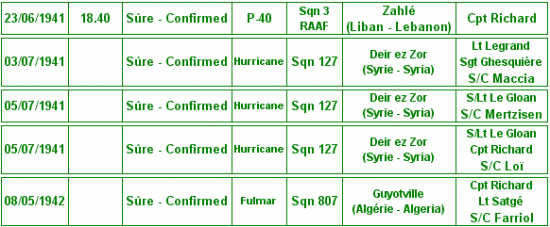
Les autres unités - Other units

Dewoitines D.520 GC I/2 - Photo : auteur inconnu - Picture : author unknown
Après l'Armistice, d'autres unités furent équipées en Dewoitine D.520. Certaines restèrent en métropole, d'autres furent affectées en Afrique.
After the Armistice, other units were equipped with Dewoitine D.520s. Some remained in France while the others were based in Africa.
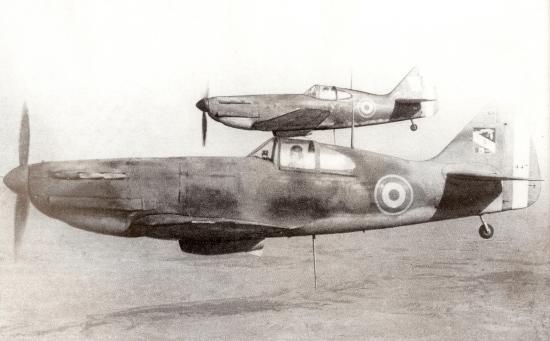
D.520 GC I/4 "Navarre"
Le Commandant Ladousse survole Meknès en juin 1943 à bord du D520 n° 447 avec un appareil de la 3e escadrille (ex GC II/6)
CO. flying over Meknes in June 1943, aboard D520 #447 with an aircraft from the 3rd Squadron (ex GC II/6)
Photo : auteur inconnu - Picture : author unknown
Par exemple, le GC I/4 "Navarre", né de la fusion du GC I/4 et d'éléments du GC II/6, fut équipé de Dewoitine D.520 de janvier à juillet 1943 puis fut équipé de matériel américain pour surveiller les côtes d'Afrique du Nord. Durant cette période, le Groupe était basé à Dakar-Ouakam(Sénégal) puis Meknes (Maroc).
As an example, the GC I/4 "Navarre", created from the fusion of the GC I/4 and elements of the GC II/6, was at first equipped with Dewoitine D.520 from January till July, and then was equipped with American equipment to watch the coasts of North Africa. During this period, the Group was based at Dakar-Ouakam (Senegal) and then Meknes (Morocco).
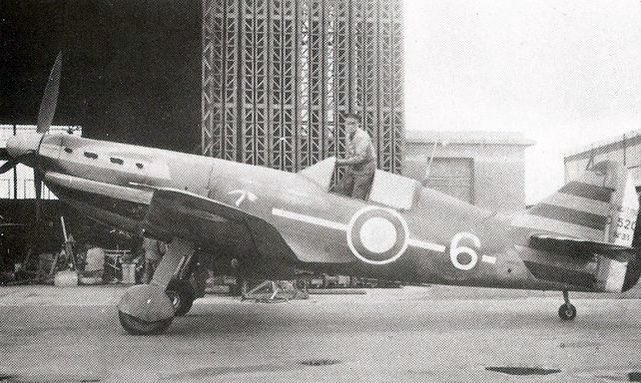
D.520 no 31 - GC I/2, SPA 3 (1ère escadrille) Sergent Lombaert, Châteauroux (France) - Août/August 1941
Photo : auteur inconnu - author unknown

D.520 no 31 - GC I/2, 1ère escadrille, Sergent Lombaert, Châteauroux (France) - Août/August 1941
Auteur inconnu - author unknown
Le tableau ci-dessous résume ces affectations. The board below summarizes these assignements.
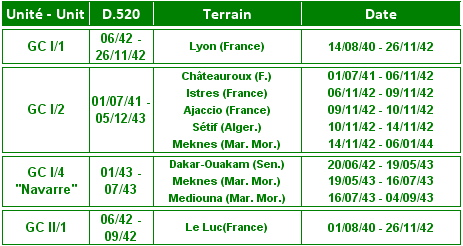
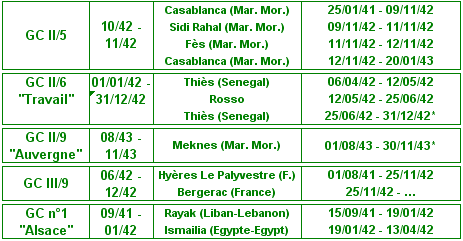
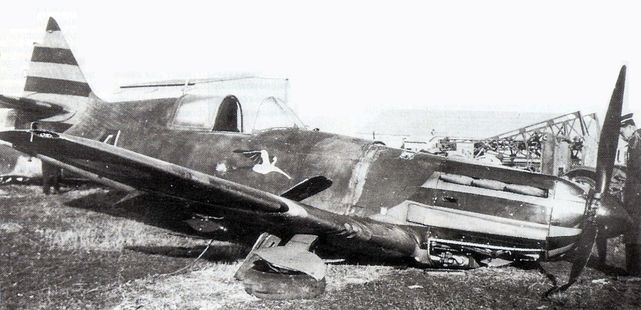
Dewoitine D.520 GC I/2 - Photo : auteur inconnu - Picture : author unknown

Dewoitine D.520 n°540 GC III/9, Hyères Le Palyvestre, 1942 - Photo : auteur inconnu - Picture : author unknown
Les D.520 de l'Aéronavale
D.520 in the Fleet Air Arm

D.520 - Escadrille 1AC - Campo dell'Oro, Corse, 24 juin/Corsica 24th, June 1940
© Pierre-André Tilley
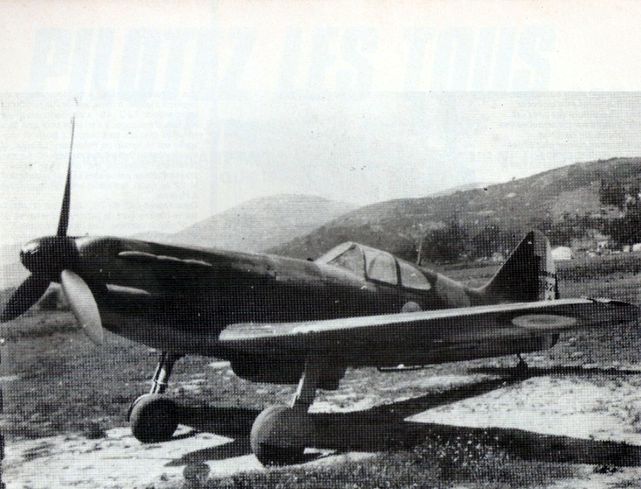
D.520 - Escadrille F1C - Ajaccio, Corse, 24 juin/Corsica 24th, June 1940
Photo : auteur inconnu - Picture : author unknown
Le 25 mai 1940, des Dewoitine sont affectés à l'Aéronavale pour remplacer des Potez 631. Livrés à Cherbourg, ils doivent rapidement rejoindre Rochefort puis Hyères puis enfin l'Afrique du Nord via Bône. La flotille de chasse 1F (escadrille 1AC et 2AC) arrive ainsi à Sidi-Ahmed (Bizerte) en Tunisie.
On May 25th, 1940, some Dewoitines were allocated to the Fleet Air Arm to replace Potez 631. Delivered in Cherbourg, they quickly had to join Rochefort then Hyères then finally North Africa via Bône. The flotille 1F (Squadrons 1AC and 2AC) so arrived at Sidi-Ahmed (Bizerte) in Tunisia.
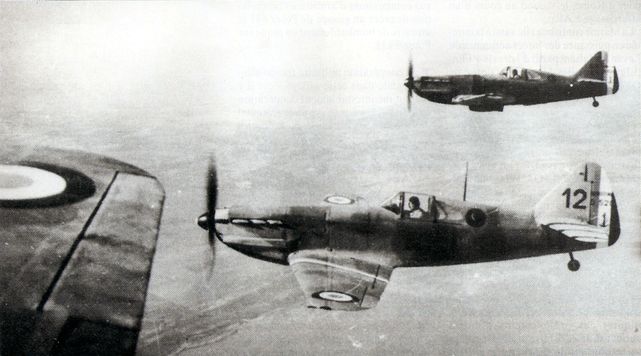
Dewoitine D.520 Escadrille 2AC, 1942
Photo : auteur inconnu - author unknown
Puis après l'attaque de Mers-El-Kébir, elle se rapproche de la Flotte et s'installe à Tafaraoui (qui deviendra Lartigue) près d'Oran. Pendant l'année 1941, les D.520 de 1F effectueront des missions de protection (notamment le cuirassé Provence) depuis Oran ou Sidi-Ahmed.
Then, after the attack of Mers-El-Kébir, it got closer to the Fleet and settled down to Tafaraoui (which became Lartigue) near Oran. In 1941, the D.520 of 1F made missions of protection (in particular the Provence battleship) since Oran or Sidi-Ahmed.
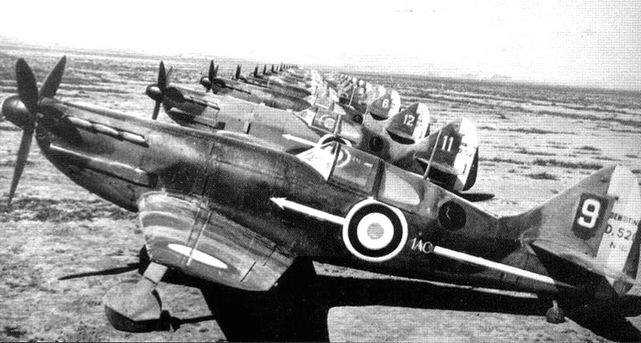
D.520 Escadrille 1AC
Au premier plan le n° 140, Second maître Joseph Conq - Oran-Lartigues (Algérie) – Fin 1940
In the foreground # 140, Leading rate Joseph Conq - Oran-Lartigues (Algeria) – Late 1940
Photo : auteur inconnu - author unknown
 Lors des combats de Syrie, la 1AC perdra le SM Ancion et 2 appareils mais abattra 6 Blenheim et Curtiss. Le 5 janvier 1942, 23 appareils de la 1F assureront la protection du Dunkerque de Mers-El-Kébir à Toulon. Redoutant une invasion du Maroc par les Allemands, la 1F est affectée à Port-Lyautey, près de Rabat.
Lors des combats de Syrie, la 1AC perdra le SM Ancion et 2 appareils mais abattra 6 Blenheim et Curtiss. Le 5 janvier 1942, 23 appareils de la 1F assureront la protection du Dunkerque de Mers-El-Kébir à Toulon. Redoutant une invasion du Maroc par les Allemands, la 1F est affectée à Port-Lyautey, près de Rabat.
During the fights of Syria, the 1AC lost the SM Ancion and 2 aircrafts but shot down 6 Blenheim and Curtiss. On January 5th, 1942, 23 aircrafts of the 1F were in charge of protecting the Dunkerque from Mers-El-Kébir to Toulon. Dreading the invasion of Morocco by the Germans, the 1F was allocated to Port-Lyautey, near Rabat.
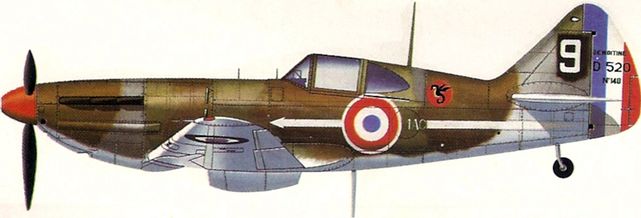
D.520 no 140 Escadrille 1AC
Second maître Joseph Conq - Oran-Lartigues (Algérie) – Fin 1940
Leading rate Joseph Conq - Oran-Lartigues (Algeria) – Late 1940
© Jean-Jacques PETIT
C'est de là que la 1F interviendra lors de l'opération Torch du 8 novembre 1942. Des D.520 attaqueront tout d'abord les péniches de débarquement défendues par la DCA puis reviendront à Port Lyautey. C'est là que des Wildcat américains attaqueront le terrain et détruiront de nombreux avions.
It is from there that the 1F was involved during the operation Torch of November 8th, 1942. Some D.520s attacked first of all landing crafts defended by the AA and then returned to Port-Lyautey. There, American Wildcats attacked the airfield and destroyed numerous aircrafts.
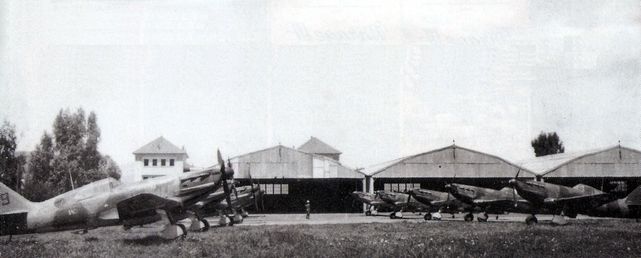
D.520 1AC
Fez (Maroc), fin 1942, début 1943. A gauche le D520 n°9
Fez (Morocco), late 1942, early 1943. On left the D520 #9
Photo © René Burlet

D.520 n°55 - SM Bédard, escadrille 2AC
Port-Lyautey (Maroc), 8 novembre 1942 - Port-Lyautey (Morocco), 8th November 1942
© Dekker Art Work - Thierry Dekker http://dekkerartwork.over-blog.com/
Quelques D.520 parviendront à décoller mais seront attaqués par l'aviation américaine. Le LV Folliot, commandant de la 1F sera abattu (par des avions ou par la DCA). Port-Lyautey sera occupé par les américains.
Nevertheless some D.520 took off but were attacked by the American aviation. The LV Folliot, Commander of the 1F was shot down (by aircrafts or by AA). Port-Lyautey was occupied by the Americans.
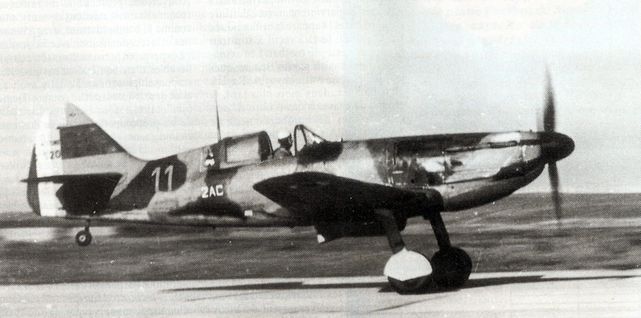
Dewoitine D.520 Escadrille 2AC - Photo : auteur inconnu - author unknown

D.520 Escadrille 2AC
Tarfaoui (Lartigues, Algérie - Algeria) – 1941
© Jean-Jacques PETIT
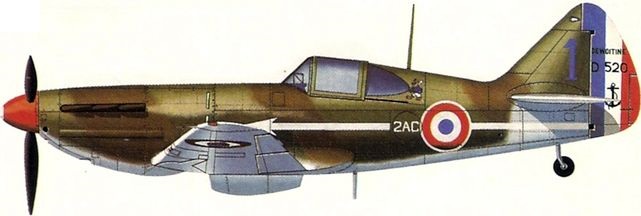
D.520 Escadrille 2AC
Port Lyautey, septembre/September 1942
© Jean-Jacques PETIT
La 1F se retir sur Agadir pour être reconstituée. En juin 1943, elle s'envole pour Thiersville (Algérie) car Lartigue est occupée par les américains. En février 1944, elle s'installera de nouveau à Lartigue. La flotille sera dissoute le 15 mai 1944.
The 1F moved to Agadir to be reconstituted. In June, 1943, it moved again to Thiersville (Algeria), Lartigue beaing occupied by the Americans. In February, 1944, it came back to Lartigue. The flotille was dissolved on May 15th, 1944.
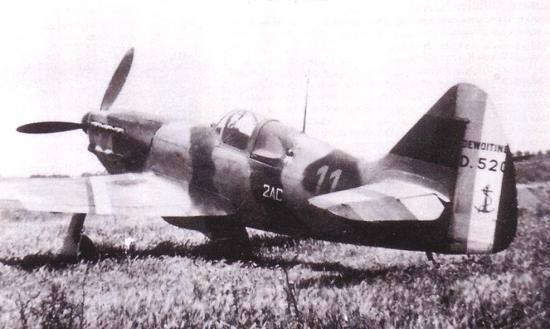
D.520 Escadrille 1AC (Photo : auteur inconnu - Picture : author unknown)
 Les Dewoitine des Français Libres
Les Dewoitine des Français Libres
Free French Dewoitines.
Un petit nombre de D.520 furent utilisés par les Français Libres pour l'entraînement. Le 26 juin 1940, L’Adjudant Littolff, le Sergent-chef Moulène et le Sous-lieutenant André Feuillerat, de la 5e escadrille du GC III/7, décollent de Toulouse à 7h30 avec 3 D520 en direction de Boscombe Down en Angleterre où ils atterrissent à 10h20. Le soir même, les 3 pilotes transfèrent leurs D520 à Cosford (40 mn de vol). Le 4 juillet, les D520 furent transférés et stockés à St-Athan, près de Cardiff, où se regroupaient hommes et matériels venus de France et de Belgique. Puis le 10 août, les avions furent transférés à Odiham (sud de Londres), puis le 15 août à Sealand pour être démontés et mis en caisse pour participer à l’opération de Dakar.
A very small number of D.520s were briefly operated by Free French Forces for training purposes. On June 26, 1940, F/Sgt Littolff, Chief Sergeant Moulène and P/O André Feuillerat, from the 5th squadron of the GC III / 7, took off from Toulouse at 7:30 am with 3 D520s towards Boscombe Down in England where they landed at 10:20 a.m. The same evening, the 3 pilots transferred their D520 to Cosford (40 min flight). On July 4, the D520s were transferred and stored in St-Athan, near Cardiff, where crews and equipment from France and Belgium were gathered. On August 10, the aircrafts were transferred to Odiham (south of London), then on August 15 to Sealand to be dismantled and crated to be used for the Dakar operation.
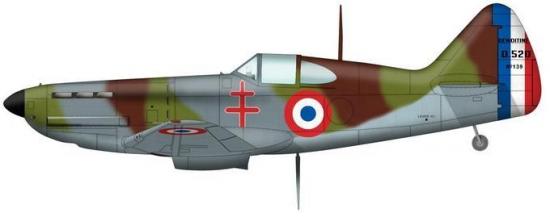
D.520 n°139 - (ex GC III/3 & ex GC III/7).
Cet appareil fut endommagé sur le terrain de Douala au Cameroun le 20/11/1940.
This aircraft was damaged on Douala airfield, Cameroon on 20/11/1940.
© Gaëtan Marie - source : Gaëtan Marie's Aviation Profiles http://www.gaetanmarie.com
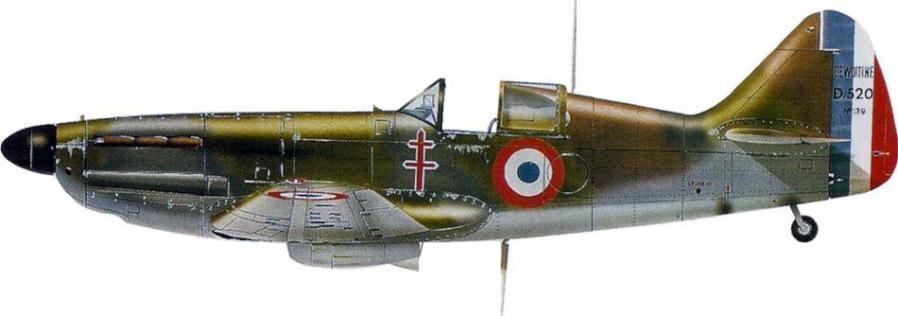
D.520 n°139
Avion peint en jaune après son évasion en Angleterre, puis repeint en bleu pour l'expédition contre Dakar - Cameroun, novembre 1940 -
Aircraft painted yellow after escaping to England, then repainted blue for the expedition to Dakar - Cameroon, Novembrer 1940.
Auteur inconnu - Author unknown
 D.520 n°139 - Groupe de Combat n°1
D.520 n°139 - Groupe de Combat n°1
Douala,Cameroun, 1940 - Douala, Cameroon, 1940.
© David Méchin
Faute de place, deux seulement furent embarqués (dont le n° 139). Le Groupe de Combat n°1 fut créé, comportant 4 escadrilles dont une de chasse sous les ordres du Lt Feuillerat. Après l’échec de l’opération de Dakar (tentative de ralliement des français de Vichy), le convoi débarqua à Douala au Cameroun. Le D520 n°409, l’avion de Littolff, fut remonté le 18 novembre. Littolff fit un premier vol le jour même puis le Lt. Feuillerat qui malheureusement se tua en effectuant un tonneau lent. Il fut enterré le lendemain. Le D520 n° 139 fut ensuite remonté et le 31 décembre 1940, Littolff vola pendant 25 mn. Puis ce fut le départ pour Fort-Lamy le 17 janvier pour les Sous-Lt Ferrant et Littolff. Le 19, Ferrant fit un vol d’essai sur le n° 139. Celui-ci était difficile à tenir, sa cellule étant déformée suite aux mauvaises conditions de voyage en caisse).
Due to a lack of space, only two were loaded (including No. 139). Combat Group No. 1 was created, with 4 squadrons, including one fighter squadron leaded by F/O Feuillerat. After the failure of Dakar operation (attempt to rally the French from Vichy), the convoy arrived in Douala, Cameroon. Littolff's D520, number 409, was reassembled at first on November 18. Littolff made a first flight the same day then F/O Feuillerat who unfortunately killed himself by completing a roll at low altitude. He was buried the next day. D520 number 139 was then reassembled and on December 31, 1940, Littolff flew for 25 minutes. Then it was the departure for Fort-Lamy on January 17 for the P/O Ferrant and Littolff. On the 19th, Ferrant made a test flight with No. 139. It was difficult to maintain, her cell being deformed due poor travel conditions in the crates).
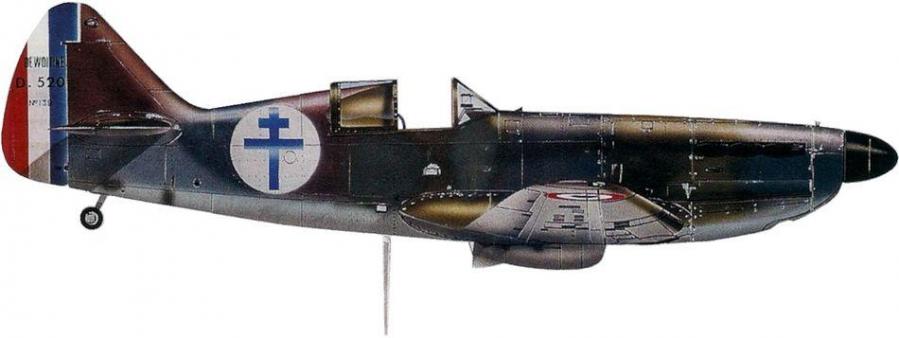
D.520 n°139, Fort-Lamy, (Tchad – Chad)
Janvier, 1941 – January 1941
Auteur inconnu – Author unknown
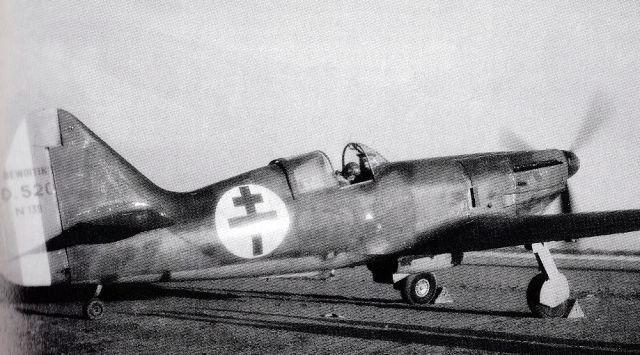
D.520 n°139, Fort-Lamy, (Tchad – Chad)
Le Sous-Lieutenant Littolff s’apprête à décoller, 24 janvier, 1941 - P/O Littolff is about to take off, 24th January 1941
Photo © Maurice Collin
Puis le D520 fut laissé à Douala tandis que les pilotes français furent transférés en Egypte pour former à Ismailia la 1ère Escadrille de Chasse, équipée un peu plus tard de Hawker Hurricane. En plus de 3 D520 évacués vers la grande-Bretagne en juin 1940, 2 autres furent récupérés suite à la retraite des forces de Vichy à Rayack au Liban.
Then the D520 was left in Douala while the French pilots were transferred to Egypt in order to create the 1st Fighter Squadron in Ismailia, equipped a little later with Hawker Hurricanes. Along with the 3 aircrafts whio had evacuated to Great-Britain in June 1940, 2 were recovered from retreating Vichy forces in Rayak, Lebanon.
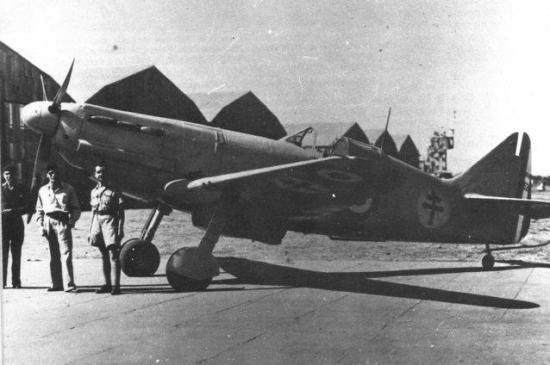

D.520
Rayack (Liban). De gauche à droite : x, Albert Littolff, Jean Tulasne
Rayack (Lebanon). From left to right : x, Albert Littolff, Jean Tulasne
Photos © François Tulasne

D.520 n°302 - Lt Littolff - GC 3 "Alsace & Normandie" (ex GC III/6)
Rayack (Liban), fin septembre 1942 - Rayack (Lebanon), late September, 1942.
© Dekker Art Work - Thierry Dekker http://dekkerartwork.over-blog.com/
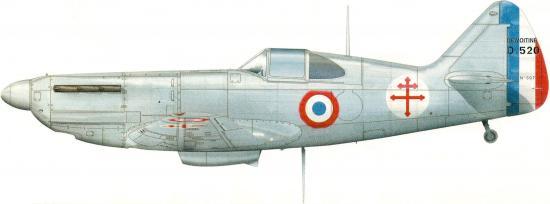
D.520 n°397 - GC3 "Alsace & Normandie" (ex GC II/6)
Rayack (Liban), 1942 - Rayack (Lebanon), 1942.
© Gaël Elegoët http://galgot.free.fr
En Décembre 1942, avec le ralliement des Forces Françaises de Vichy aux alliés, 153 D.520 étaient aux mains des français en Afrique du Nord. Leur équipement radio était incompatible avec l’équipement allié. Début 1943, ils furent relégués aux tâches d’entraînement à l’école de chasse de Meknes, et progressivement remplacés par des Spitfire et des P-39 dans les unités de combat.
In December 1942, as French forces formerly under Vichy had sided with the Allies, there were 153 D.520s left in French hands in North Africa. Their radio sets were incompatible with Allied equipment. From early 1943 on, they were relegated to training duties at the fighter school in Meknes, and progressively replaced by Spitfires and P-39s in combat units.
UN D520 A CHATEAUROUX - A D520 AT CHATEAUROUX

D.520 Forces Françaises Intérieures (Internal French Forces)
Châteauroux, 1944 - Châteauroux (France), 1944
artiste inconnu - artist unknown - source : http://wp.scn.ru
Le 19 août 1944, les Allemands quittèrent Châteauroux après avoir fait sauter les installations restantes de le terrain d’aviation de la Martinerie, à l’Est de la ville. Le 20, un groupe d’une cinquantaine de résistants (qui monta rapidement jusqu'à 200), sous les ordres du Lieutenant-colonel Tison, s’emparèrent du terrain pour en permettre sa réutilisation. Ils trouvèrent des épaves d’avions et décidèrent d’en remettre en état, notamment un Heinkel 46 et un Dewoitine D520.
On August 19, 1944, the Germans left Châteauroux after blowing up the remaining facilities at airfield « La Martinerie », east of the town. On the 20th, a group of about fifty partisans (which quickly increased to 200), under the command of Lieutenant-Colonel Tison, occupied the airfield to allow it to be used again. They found and repaired aircraft wrecks, including a Heinkel 46 and a Dewoitine D520.
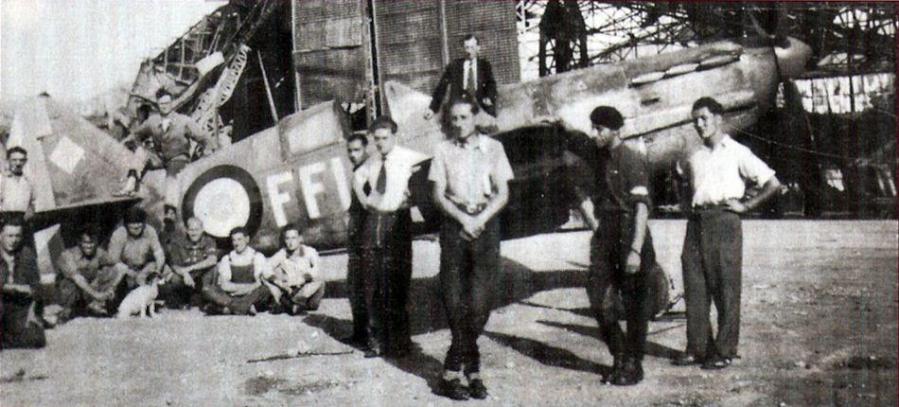
D.520 Châteauroux,(France), août 1944
Restauré par les Forces Françaises Intérieures - Refurbished by the Internal French Forces
Photo : source inconnue – source unknown
Le 27 août, le D520 était prêt à voler, marqué du sigle FFI sur le fuselage pour éviter les méprises. Le sergent-chef Givelet, qui n’avait pas piloté depuis 1940, essaya l’appareil mais termina sur le ventre à l’atterrissage, le train cassé. Deux jours plus tard, le retour des allemands, remontant du Sud, fut annoncé. Les FFI quittèrent le terrain après avoir caché les avions sous des tôles et rentrèrent chez eux. Une cinquantaine d'entre eux prirent le chemin des bois. Les allemands quittèrent définitivement le terrain le 10 septembre.
On August 27, the D520 was ready to fly, marked with the letters FFI on the fuselage to avoid misunderstanding. Master Sergeant Givelet, who had not flown since 1940, tested the aircraft but finished the flight by a belly landing, the landing gear broken. Two days later, the return of the Germans from the South was announced. The FFI left the airfield after hiding the aircrafts under metal sheets and went backhome. About fifty of them took the road to the woods. The Germans left the field definitively on September 10.
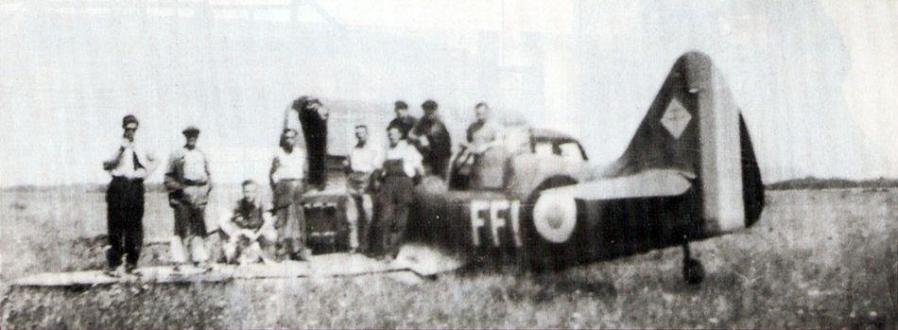
D.520 Châteauroux,(France), août 1944
Posé sur le ventre par le Sergent-Chef Givelet - After a belly landing by Master Sergeant Givelet
Photo : source inconnue – source unknown
LE GROUPE DE CHASSE DORET – THE FIGHTER GROUP DORET
Pendant la libération de la France, quelques exemplaires abandonnés par les allemands furent utilisés pour des attaques au sol contre des poches de résistance allemandes sur la côte Ouest. Suite au débarquement allié en Provence (15 août 1944), le pilote Marcel Doret crée le 1er groupe de chasse FFI "Doret" avec des D 520 récupérés dans les usines toulousaines Morane-Saulnier (de Tarbes-Ossun) et SNCASE-Dewoitine (St Martin du Touch).
During the liberation of France, a few examples abandoned by the Germans were used in ground attacks against the isolated German pockets of resistance on the Western coast. After the allied landing in Provence (15th August 1944), the famous pilot Marcel Doret creates the 1st fighter group FFI "Doret" (Internal French Forces) with D 520 recovered in the Toulouse factories, Morane-Saulnier (in Tarbes-Ossun) and SNCASE-Dewoitine (St Martin du Touch).


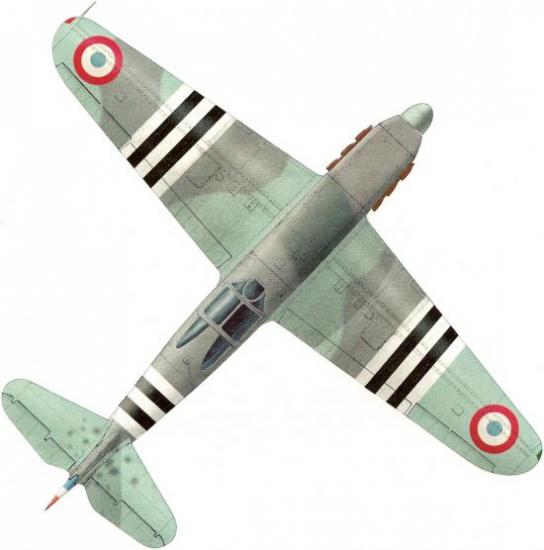
D.520 n°548 - 2° Escadrille, GC FFI "Doret" (Internal French forces)
Tarbes-Ossun, septembre 1944 - Tarbes-Ossun (France), September 1944.
© Dekker Art Work - Thierry Dekker http://dekkerartwork.over-blog.com/
Deux escadrilles sont constituées : l'une à Toulouse-Blagnac (commandée par Léopold Galy, pilote d'essai à la SNCASE), l'autre à Tarbes-Ossun (commandée par Jean Cliquet, chef pilote chez Morane-Saulnier). Le groupe FFI "Doret" opérera en appui du Corps Franc Pommiès.
Two squadrons are created : one at Toulouse-Blagnac (leaded by Leopold Galy, test pilot at the SNCASE), the other at tarbes-Ossun (leaded by Jean Cliquet, pilot chief at Morane-Saulnier). The group FFI "Doret" operated in support of the Corps Franc Pommiès.
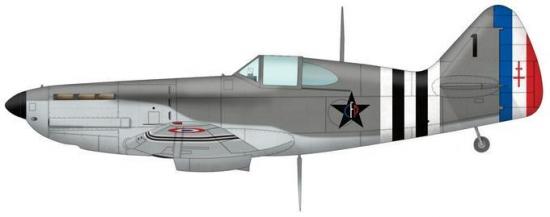
D.520 - Corps Franc "Pommiès" - FAFL, août 1944 - Free French unit, August 1944
© Gaëtan Marie - source : Gaëtan Marie's Aviation Profiles http://www.gaetanmarie.com
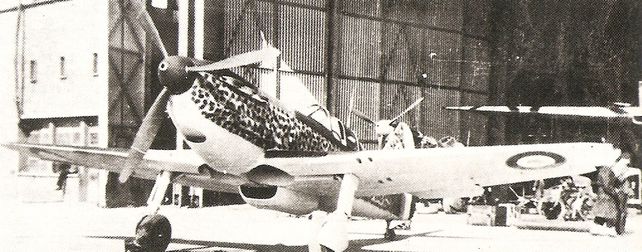 D.520 GCB I/18 Photo : auteur inconnu - author unknown
D.520 GCB I/18 Photo : auteur inconnu - author unknown
Le 30 Novembre 1944, le groupe FFI "Doret" est intégré dans l'Armée de l'Air régulière sous le nom de GC II/18 "Saintonge".
On November 30th, 1944, the group FFI "Doret" is integrated in the regular Air Force with name GC II/8 "Saintonge".

D.520 GC II/18 "Saintonge" Photo : auteur inconnu - author unknown
Il est engagé dans des missions d'attaque au sol et d'escorte de bombardiers en piqué Douglas A-24 sur les poches de l'Atlantique.
It is engaged in ground attack misisons and escort of diving bombers Douglas A-24 over the Atlantic coast.
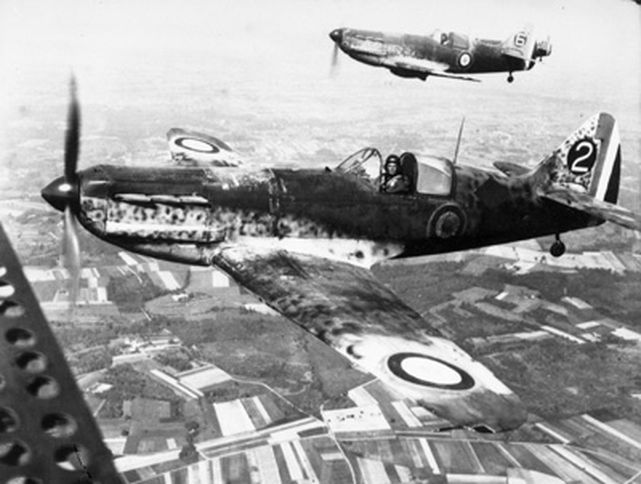
D.520 GCB I/18
© SHD - Droits réservés - Service Historique de la défense (www.servicehistorique.sga.defense.gouv.fr)
Fin février 1945, le groupe reverse ses 15 derniers D 520 à la 2° escadrille du GCB I/18 "Vendée", basée à Cognac, qui opère sur les poches de Royan et la pointe de Grave. Ce groupe sera dissous le 10 octobre 1945.
Late February 1945, the group transfers its last 15 D 520 to the 2° Squadron of GCB I/18 "Vendée", based in Cognac, which operates over Royan and the "Pointe de Grave" (atlantic coast). This group was stopped on October 10th, 1945.
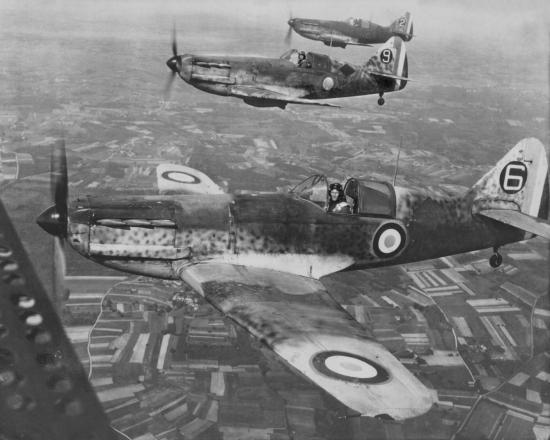
D.520GCB I/18 "Vendée"
Premier plan n°6 (D 520 n° 689) - Forefront #6 (D 520 # 689)
© Bernard WESOLOWSKI Mercy Magazine

D.520n°689 - S/C Wachter, GCB I/18 "Vendée"
Cognac, mai 1945 - Cognac (France), May 1945
© Dekker Art Work - Thierry Dekker http://dekkerartwork.over-blog.com
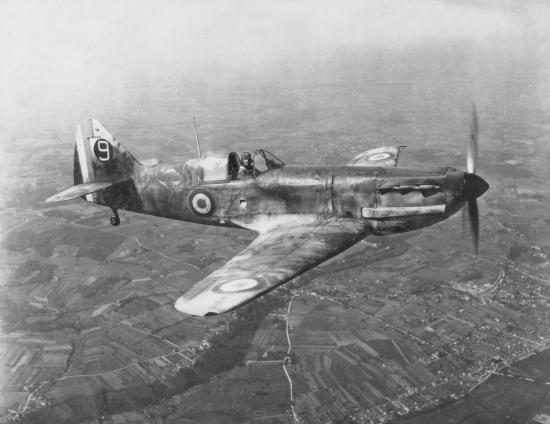
D.520GCB I/18 "Vendée" © Bernard WESOLOWSKI Mercy Magazine
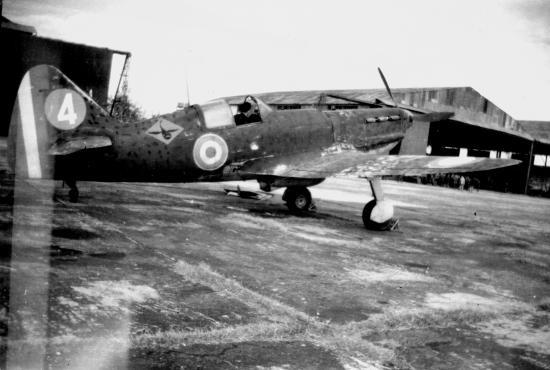
D.520GCB I/18 "Vendée" © Dan Gilberti www.histavia21.net

D.520 n°116, GLA 45
Boufarik (Algérie), avril 1945 - Boufarik (Algeria), April 1945
© Dekker Art Work - Thierry Dekker http://dekkerartwork.over-blog.com/
D520 SUR LES CHAMPS-ELYSEES - D520 ON THE CHAMPS-ELYSEES BOULEVARD
Au printemps 1945, des D520 ont été exposés à l'entrée d'une exposition sur l'aviation à l'entrée des bâtiments de la régie Renault sur les Champs-Elysées à Paris.
In the spring of 1945, D520s were exhibited at the entrance to an aviation exhibition at the gate of the "Régie Renault" (Renault company) buildings on the Champs-Elysées in Paris.

D.520, Champs-Elysées, Paris
Printemps 1945 - Spring 1945
© Coll Marchand
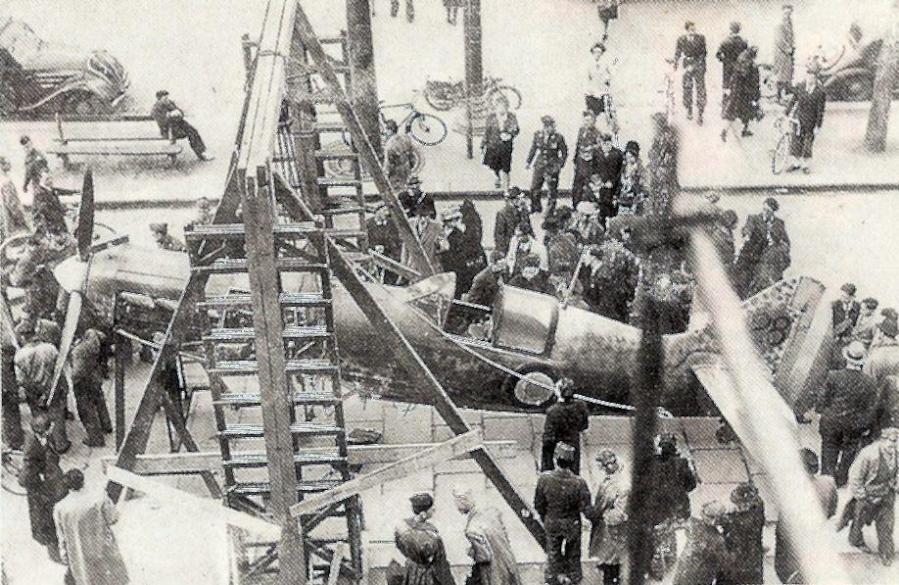
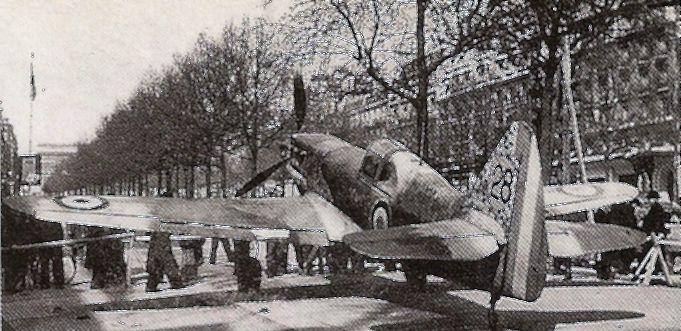
D.520, Champs-Elysées, Paris
Printemps 1945 - Spring 1945
© Coll Jean-Marie Mater

D.520, Champs-Elysées, Paris
Printemps 1945 - Spring 1945
© Coll Franck Berthelin
L'histoire du Dewoitine n°243
The story of the Dewoitine # 243.
A la fin de la guerre, le ministre de l'air Charles Tillon envisage de lancer un plan d'entraînement des pilotes et moniteurs. Mais les avions biplaces n'existant pas, il faut en fabriquer. Sur la base de Tours, le commandant Duval a l'idée de transformer un D520 en biplace. Sans attendre, il lance la transformation du D520 n°243 choisi parmi la trentaine de D520 en service.
At the end of the war, the Air Minister Charles Tillon decided to launch a training programm for pilots and instructors. But two-seat aircrafts were not available and it was necessary to create one. On the air base of Tours, commander Duval had the idea to transform D520 into two-seat aircraft. He did not wait and launched the transformation of D520 # 243 chosen among around thirty D520 in service.

D.520n°243, Capitaine Jean Gisclon.
Base Ecole 704, Tours, été 1945 - Training Base 704, Tours (France), Summer 1945
© Dekker Art Work - Thierry Dekker http://dekkerartwork.over-blog.com/
Pris en compte par l'EAA 301 le 22 mai 1940, le 243 fut ensuite livré au GC II/7 peu de temps après. Il se replia ensuite avec son groupe en AFN le 20 juin. Après un accident, il fut réparé et transféré à la 6e escadrille du GC III/6 (avec le code "29") jusqu'en avril 1943. Il fut ensuite rattaché au CIC de Meknès puis regagna la France après l'Armistice. il fut affecté à la Base Ecole 704 de Tours.
Taken in charge by the EAA 301 on May 22nd, 1940, the 243 was delivered to the GC II / 7 a bit later. It then escaped with its group in AFN on June 20th. After an accident, it was repaired and sent to the 6th squadron of GC III/6 (with the code "29") until April, 1943. It was then assigned to the CIC in Meknes and was sent back to France after the Armistice. It was allocated to the Training Base 704 at Tours.
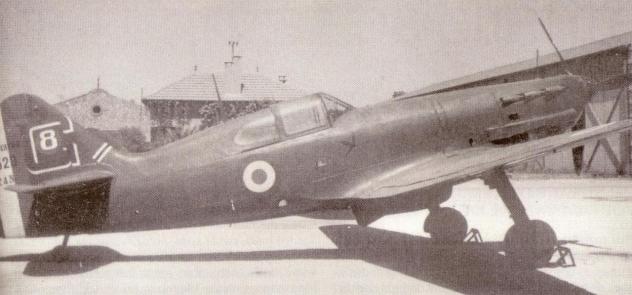 D.520n°243, Capitaine Jean Gisclon.
D.520n°243, Capitaine Jean Gisclon.
Base Ecole 704, Tours, été 1945 - Training Base 704, Tours (France), Summer 1945
Photo : auteur inconnu - author unknown
L'Adjudant-Chef Naegelen sera chargé des travaux de transformation. Tout d'abord, la partie arrière du cokpit est déshabillée et le compartiment radio démonté. Puis il faudra aménager la place moniteur, ce qui sera plus complexe : les pédales et le palonnier seront récupérés sur un FW 190 et le manche à balai sur un D520 réformé. Le siège du moniteur proviendra d'un A-24.
Chief warrant officer Naegelen was charged of transformation work. At first, the back part of the cokpit was "undressed" and the radio compartment unsettled. Then it was necessary to install the instructor space, which semt to be harder : pedals and palonnier were taken on a FW 190 and the control stick on a reformed D520. The instructor seat was taken on a A-24.
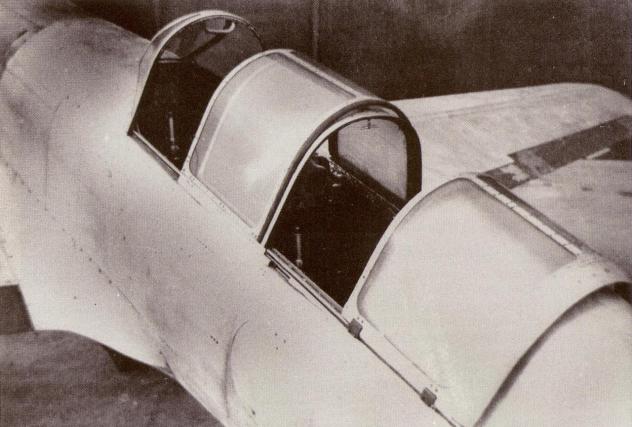 D.520n°243 Photo : auteur inconnu - author unknown
D.520n°243 Photo : auteur inconnu - author unknown
 Le 19 octobre 1945, le Commandant Roger Duval effectue le premier vol puis deux autres le même jour. Quelques modifications de centrage seront nécessaires mais globalement le résultat est positif. Il reste ensuite à obtenir l'homologation de l'appareil : celle-ci sera facilitée par la visite de Charles Tillon à Tours fin 1945.
Le 19 octobre 1945, le Commandant Roger Duval effectue le premier vol puis deux autres le même jour. Quelques modifications de centrage seront nécessaires mais globalement le résultat est positif. Il reste ensuite à obtenir l'homologation de l'appareil : celle-ci sera facilitée par la visite de Charles Tillon à Tours fin 1945.
On October 19th, 1945, the Commander Roger Duval made the first flight and then two others the same day. Some modifications of centring were necessary but globally the result was positive. It then remained to obtain the flight homologation for the aircraft : this was facilitated by Charles Tillon's visit in Tours late 1945.
 D.520n°243
D.520n°243
Base Ecole 704, premiers essais, octobre 1945 - Training Base 704, first flights, October 1945
© Dekker Art Work - Thierry Dekker http://dekkerartwork.over-blog.com/
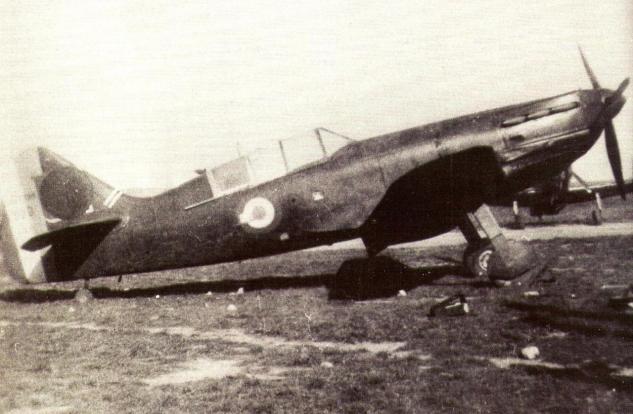 D.520n°243 - Photo : auteur inconnu - author unknown
D.520n°243 - Photo : auteur inconnu - author unknown
Le 24 octobre, le Commandant Duval s'envole pour la première fois avec un passager en place arrière, l'aspirant Paix. Le 9 novembre, il emmène à tour de rôle les élèves monitrices Suzanne Melk Elisabeth Boselli, Anne-Marie Imbrecq et Geneviève Lefèvre-Sellier. Suzanne Melk sera la première femme à obtenir en février 1946 le brevet féminin de pilote militaire.
On October 24th, Commander Duval flew for the first time with a passenger in rear position, a senior officer Paix. On November 9th, he flew alternately with student instructors Suzanne Melk, Elisabeth Boselli, Anne-Marie Imbrecq and Geneviève Lefèvre-Sellier. Suzanne Melk was the first woman to obtain in February, 1946 the feminine certificate of military pilot.
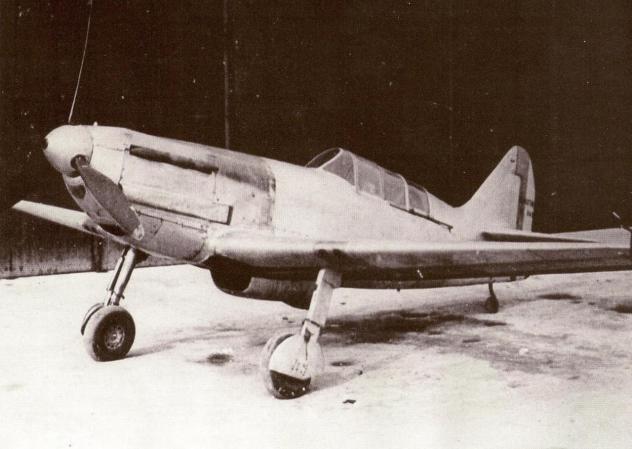 D.520n°243 - Photo : auteur inconnu - author unknown
D.520n°243 - Photo : auteur inconnu - author unknown
Début 1946, le D520 n°243 sera pris en charge par le CEV (Centre d'Essai en Vol). Le Commandant Duval et le Capitaine Rasquin conduiront l'avion à Marignane le 5 février. Suite à cela, plusieurs D520 seront transformés en version DC (Double Commande).
OEarly 1946, the D520 n°243 was taken in charge by the CEV (Flight Test Center). The Commander Duval and Captain Rasquin flew the aircraft to Marignane (Marseille, France) on February 5th. After that, several D520 were transformed into version DC (Dual Control).
 D.520n°243
D.520n°243
CEV, Marignane, février 1946 - CEV, Marignane (Marseille, France), February 1946
© Dekker Art Work - Thierry Dekker http://dekkerartwork.over-blog.com/

L'histoire du Dewoitine n°2
The story of the Dewoitine # 2.
Le D.520 n°2 a fait son premier vol le 3 décembre 1939. Le 11 Janvier 1940, il effectue des essais de survitesse piloté par Léopold Galy et atteint 920 km/h ! Supervisé par le Capitaine Rozanoff, pilotant un Morane Saulnier MS 406, Galy effectue des voltiges et des vrilles. Puis, souhaitant prouver les performances du D520 face au Curtiss H-75 américain, il grimpa à 8 000 m et décida de se lancer dans un piqué qu'il arrêta quand les ailerons commencèrent à gonfler. Après l'atterrissage, les bandes de contrôle révélèrent une vitesse supérieure à 900 km/h qui fut homologuée.
The D.520 #2 made its maiden flight on December 3rd, 1939. On January 11th, 1940, it was flown for overspeed tests by Léopold Galy and reached 920 km/h (570 mph) ! Supervised by Captain Rozanoff, who was flying a Morane Saulnier MS 406, Galy made aerobatics and spins. Then, Galy wished to prove the performances of D520 versus the american Curtiss H-75 and climbed to 8,000 m ; he dived and stopped when the ailerons started to inflate. After landing, the audits revealed a high speed of more than 900 km/h which was homologated.

D.520 n°2 - Décembre 1939 - Decembrer 1939
© Archives départementales de la Haute-Garonne
Le 8 février 1940, le D520 n°2 est pris en compte par l'Entrepot de l'Armée de l'Air 301 (EAA 301) puis est affecté au Centre d'Essais en Vol 371 (CEV) de Bricy dans le Loiret. Il y reste jusqu'au 19 mai 1940. Il est ensuite envoyé à l'annexe de l'EAA 301 à Toulouse-Francazal dans le but d'être affecté à un Escadron d'Entraînement de l'Armée de l'AIr de Vichy ; mais la Commission d'Armistice allemande refuse et il sera stocké à partir de novembre. Sorti de stockage en juillet 1941, il fera partie des 26 Dewoitine affectés au GC I/2 à Châteauroux ; il y intègrera la 2ème escadrille.
On February 8th, 1940, the D520 #2 was received by the Air Force Depot 301 (EAA 301) and then affected in the Flight Test Centre 371 (CEV) at Bricy (Loiret, France). It remained there up to May 19th, 1940. It was then sent to the annexe of the EAA 301 in Toulouse-Francazal in order to be affected to a Training Squadron of the Vichy Air Force ; but the German Armistice Council refused and it was stored in November. It was taken out of stock in July 1941, and was part of the 26 Dewoitine assigned to the GC I/2 in Chateauroux ; it was affected to the 2nd squadron.

D.520 n°2 "18" Groupe Doret - octobre 1944 - October 1944
© Gaëtan Marie - source : Gaëtan Marie's Aviation Profiles http://www.gaetanmarie.com
Reversé au parc 92 de Châteauroux, les Allemands le capturent lors de l'invasion de la zone libre en 1942, avant qu'il ne rejoigne l'Afrique du Nord. Il n'existe pas à ce jour d'information sur cette période "allemande". En octobre 1944, on le retrouve à Toulouse après qu'il ait été remis en état pour le groupe de chasse de Marcel Doret. Etant le 18ème avion rénové par la SNCASE, on lui peint le n°18 sur le plan fixe vertical de l'empennage.
Transferred to the park 92 in Chateauroux, it was captured by the Germans during the invasion of the Free Zone in 1942, and could not join North Africa. No relevant information is known about this “German” period. In October 1944, it was in Toulouse after it was renovated for the fighting group Marcel Doret. As the 18th plane renovated by the SNCASE, a number 18 was painted on the vertical tail.

D.520, Groupe Doret
Fin 1944. Le "18" est le second avion sur la photo.
Late 1944. The # "18" is the second aircraft on the picture
Auteur inconnu - Author unknown
Après un vol le 10 octobre, il est réceptionné le 17 par la SNCASE, puis le 18 par le groupe Doret. Le D520 n°2 volera au sein du GC II/18 (nouveau nom du groupe Doret) jusqu'à la fin février 1945. Il est ensuite affecté au CIACB (Centre d’Instruction et d’Application de Chasse et de Bombardement) à Toulouse-Francazal.
After a flight on October 10th, it is received and accepted on the 17th by the SNCASE, then on the 18th by the group Doret. The D520 #2 flew with GC II/18 (new name of the group Doret) until the end of February, 1945. It was then affected to the CIACB (Center for Instruction and Application of Fighting and Bombardment) in Toulouse-Francazal.
10 avril 1945, la fin tragique du D520 n°2 piloté par Georges Tulle
April 10th, 1945, the tragic end of D520 n°2 flown by Georges Tulle
Le 10 avril 1945, à 15h35, le Sous-Lieutenant Georges Tulle, aux commandes du D520 n°2, s'aligne sur la piste de Toulouse-Francazal avec son équipier pour un exercice de patrouille serrée. Il met les gaz, décolle mais, au lieu de prendre de la hauteur, il effectue un tour de piste avec le train sorti et les volets rentrés, probablement pour se reposer. Il s'aligne pour revenir, avec un vent de 12 à 15 m/s, mais décroche et passe tout à coup sur le dos à 100-150 m d'altitude.
On April 10th, 1945, at 3.35 pm, the Pilot Officer Georges Tulle, flying the D520 n°2, lined up on the runway at Toulouse-Francazal with his team-member for an exercise of tight patrol. He applied power, took off but, instead of climbing out, he carried out a circuit with the landing gear out and the flaps retracted, probably to land. He lined up to fly back, with a wind of 12 to 15 m/s, but stalled and rolled inverted at 100-150 m in altitude.
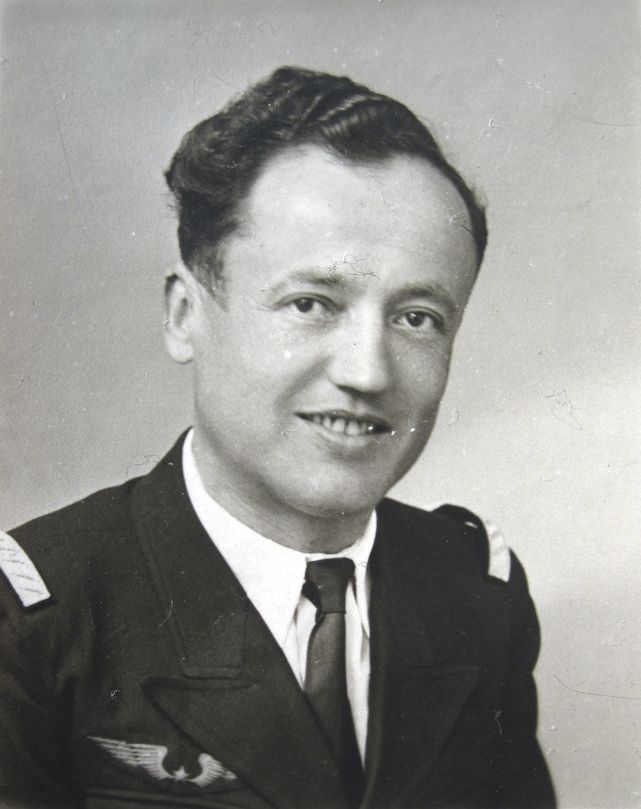
Georges Tulle - Auteur inconnu - Author unknown
Tulle rattrape l'avion, le remet dans l'axe de la piste, mais à une dizaine de mètres, décroche à nouveau, touche le sol et rebondit ; le train s'arrache alors et le chasseur s'écrase et prend feu. Georges Tulle est tué sur le coup ; il est 15h40. Les débris trop calcinés de l'appareil ne permettront pas d'identifier les causes exactes de l'accident.
Tulle pulled out of his dive, aligned it with the runway, but at about ten meters, stalled again, touched the ground and rebounded ; the train was then torn off and the fighter crashed and burst into flames. Georges Tulle was immediately killed ; it was 3.40 pm. The remains of the aircraft, too calcined madi it impossible to identify the causes of the accident.

Les utilisateurs étrangers - Foreign users
Quand les allemands ont envahi la zone libre en Novembre 1942, ils capturèrent 246 D.520 (sur 1 876 avions de tous types). De plus, 62 avions furent fabriqués sous l'occupation. Quelques uns furent utilisés par la Luftwaffe pour l'entraînement. Les allemands transférèrent 96 (ou 120) D.520 en Bulgarie et 60 en Italie.
As German forces invaded the free zone in November 1942, they captured 246 D.520s (out of 1 876 aircrafts of all types) ; additionally, 62 were completed under German occupation. Some were used by the Luftwaffe for training pureposes. The Germans also transferred 96 (or 120) D.520s to Bulgaria and 60 to Italy.
Allemagne - Germany
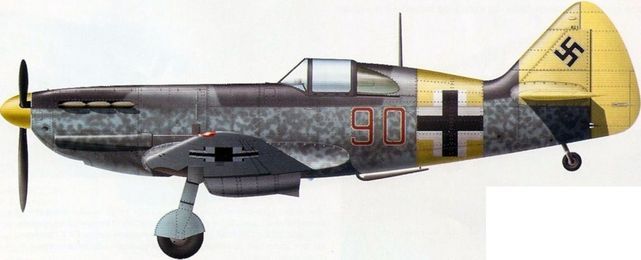
D.520 n° 621, 2./JG 101, Pau (France), 1943
© Jean-Marie Guillou
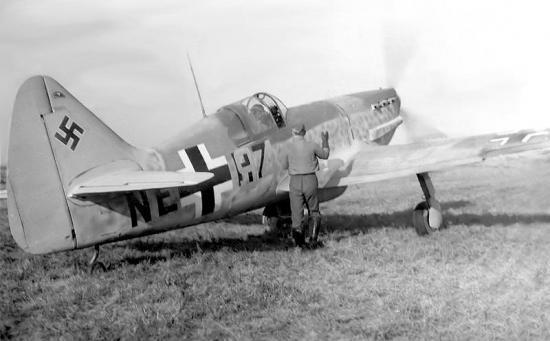
D.520 NE+HZ "94", JG 101, Pau (France), 1944 © Thomas Genth www.thomasgenth.de
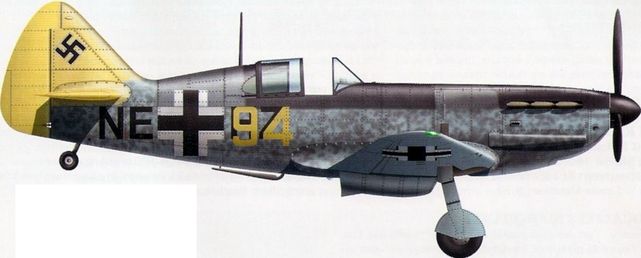
D.520 NE+HZ "94", I./JG 101, Pau (France), 1944
© Jean-Marie Guillou
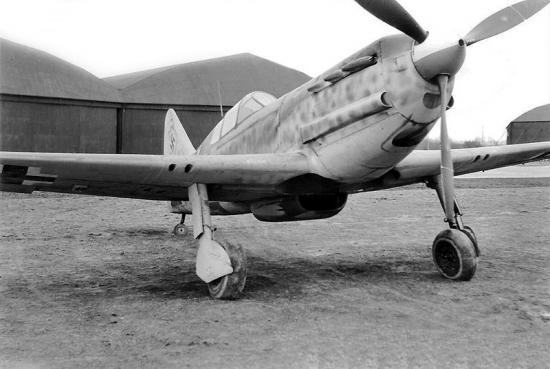
D.520 JG 101, Pau (France), 1944 © Thomas Genth www.thomasgenth.de
Après l'Armistice mais aussi et surtout après l'invasion de la zone sud en novembre 1942, les allemands capturèrent 246 Dewoitine D.520 dont 182 en état de vol. Ils les utilisèrent à des fins de formation.
After the Armistice but also and above all after the invasion of Southern France in November 1942, the Germans captured 246 D.520s but only 182 of them airworthy. They used them for training purposes.

D.520 JG 105, Chartres (France), mai/May1944
Auteur inconnu - Author unknown
A noter que le 4 novembre 1943, deux D520 récupérés par les Allemands (les n° 693 piloté par Rudolf Tomasch et n°505 piloté par August Malle), et affectés à la JG 101, décollent de Tarbes. Surpris par le brouillard, les deux avions s’écrasent, Tomasch dans une prairie et Malle percute une colline. Les deux pilotes sont tués sur le coup. Ce n’est que 75 ans après ce crash que les restes du D520 n° 505 furent retrouvés par notre ami Gilles Collaveri (https://aerocherche.fr/).
Note that on November 4, 1943, two D520s captured by the Germans (n° 693 flown by Rudolf Tomasch and n° 505 flown by August Malle), and assigned to JG 101, took off from Tarbes. Surprised by the fog, the two planes crashed, Tomasch in a meadow and Malle hit a hill. The two pilots were killed instantly. It was only 75 years after this crash that the remains of D520 n° 505 were found by our friend Gilles Collaveri (https://aerocherche.fr/).

D.520 no 505 GC I/1, Georges Garde - fin 1942 / late 1942
© Pierre-André Tilley
Le Dewoitine D520 n° 505 était initialement l’avion de Georges Garde. Ce pilote vola tout d’abord sur Bloch MB 152 au sein du GC I/1. Il obtint 5 victoires avant l’armistice de juin 1940. Reconvertit sur D 520, il pilota alors le n° 505. Il entra en résistance en août 1943 (réseau « Alliance ») puis rejoint l’Afrique du Nord et pris le commandement du Centre d’Instruction de Meknès (Maroc).
Dewoitine D520 n° 505 was originally Georges Garde’s aircraft. This pilot first flew on Bloch MB 152 in the GC I/1. He obtained 5 air kills before the armistice of June 1940. Reconverted on D 520, he then flew n° 505. He joined the resistance in August 1943 ("Alliance" network), then reached North Africa and leaded the Meknes Training Center (Morocco).

D.520 no 505 JG 101
© Vincent Dhorne
Les JG 101 (basée à Nancy puis à Pau) , JG 103 (basée à Zeltweg en Autriche puis à Bruxelles), JG 105 (Paris-le-Bourget puis Chartres) et JG 107 (Nancy) en furent largement équipées. Nous avons connaissance de quelques accidents recensés en 1944.
The JG 101 (based in Nancy and then Pau), JG 103 (based in Zeltweg in Austria and then Brussels), JG 105 (Paris-le-Bourget and then Chartres) and JG 107 (Nancy) were widely equipped. We have information about some accidents listed in 1944. 
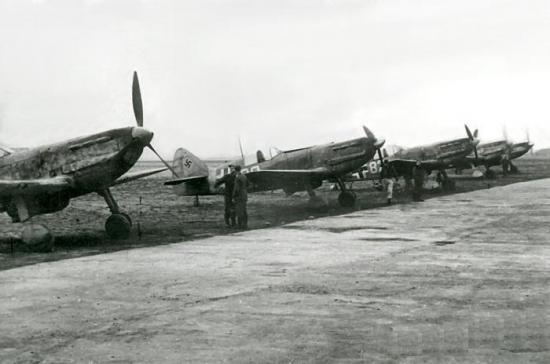
D.520 JG 101, Pau (France), 1944 © Thomas Genth www.thomasgenth.de

D.520 N?+HZ "89", JG 101, Pau (France), 1944
Auteur inconnu - Author unknown

D.520 JG 101, Pau (France), 1944 © Thomas Genth www.thomasgenth.de

D.520 n°745
© Jean-Marie Guillou

D.520 Toulouse-Francazal (France)
© Jean-Marie Guillou

